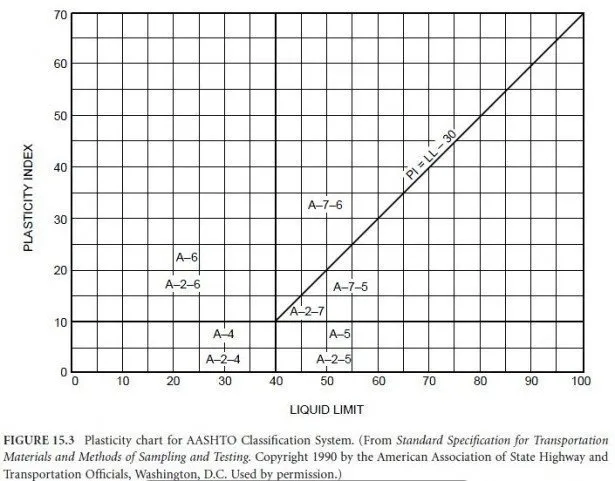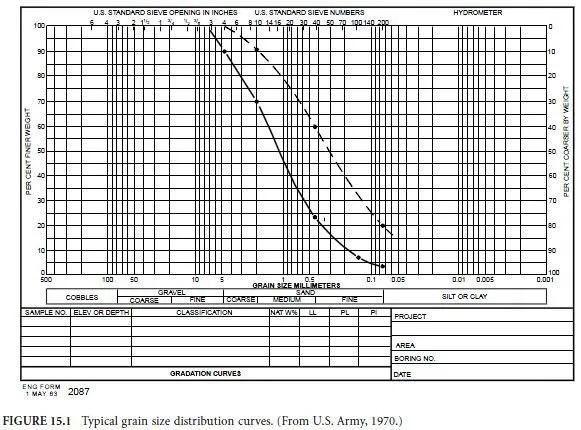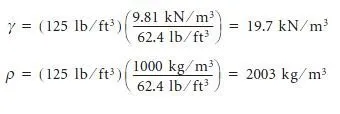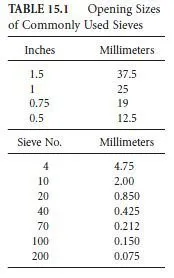The ratio of the weight of a material to its volume is its unit weight, sometimes termed specific weight or
weight density. The unit weight of water, Yw, is 9.81 kN/m3 in the SI system and 62.4 lb/ft3 in the English
system. The unit weight of solids, Y s, varies with the mineralogy of the soil particles but is commonly in
the range of 26.0 to 27.0 kN/m3 or 165 to 172 lb/ft3. The total unit weight of a soil (the solids-water-air
system), denoted g, is the ratio of the total weight to the total volume occupied:

The saturated unit weight, denoted g sat, is the total unit weight that would be obtained if the air voids were filled with an equal volume of water (S = 100% and Vw = V). The dry unit weight, denoted g d, is often termed the dry density and has particular importance in field control of soil compaction. It is the ratio of the weight of solids to the total volume:

Note that the dry unit weight matches the weight of a single component the solids with the entire volume of solids, water, and air. It does not represent the unit weight of any component or consistent set of components, but rather provides a measure of how much solid material by weight is in the total volume of a container, such as an earthmover or a compaction mold. The buoyant unit weight or effective unit weight, Y’, is equal to the saturated unit weight minus the unit weight of water, Yw:
![]()
The buoyant unit weight is sometimes used to directly calculate vertical effective stresses below the water table instead of calculating total stresses and subtracting pore pressures.




